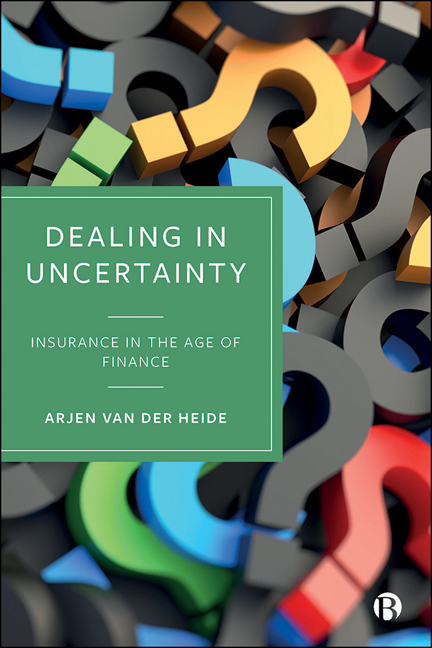Book contents
- Frontmatter
- Contents
- List of Figures
- Acknowledgements
- 1 Life Insurance in the Age of Finance
- 2 Financialization, Quantification and Evaluation
- 3 Shifting Boundaries between Insurance and Finance
- 4 Actuaries Going on a Random Walk
- 5 ‘Authors of Their Own Misfortune’
- 6 ‘Taking Account of What the Market Has to Say’
- 7 Managing Risk in Insurance
- 8 The Long Road to Solvency II (and Back Again?)
- 9 De-Risking Pensions, Managing Assets
- 10 Financial Evaluation and the Future of Insurance Society
- Notes
- References
- Index
4 - Actuaries Going on a Random Walk
Published online by Cambridge University Press: 20 January 2024
- Frontmatter
- Contents
- List of Figures
- Acknowledgements
- 1 Life Insurance in the Age of Finance
- 2 Financialization, Quantification and Evaluation
- 3 Shifting Boundaries between Insurance and Finance
- 4 Actuaries Going on a Random Walk
- 5 ‘Authors of Their Own Misfortune’
- 6 ‘Taking Account of What the Market Has to Say’
- 7 Managing Risk in Insurance
- 8 The Long Road to Solvency II (and Back Again?)
- 9 De-Risking Pensions, Managing Assets
- 10 Financial Evaluation and the Future of Insurance Society
- Notes
- References
- Index
Summary
It is now over five years since Mr Benjamin's paper was discussed by the Institute. That discussion was by far the stormiest I have ever attended; I remember enjoying it very much. Although the paper was criticized from many angles, it highlighted a very real problem which could not be solved using traditional techniques and suggested a novel, alternative approach. (Smith in Corby, 1977, p 274)
In 1971, the actuary Sydney Benjamin, who was employed by the actuarial consulting firm Bacon & Woodrow, presented a paper at a sessional meeting of the Institute of Actuaries. In his paper, Benjamin proposed a novel approach to examining the financial risk of guarantees in unit-linked insurance. He argued that price movements in financial markets were random. Rather than relying on actuarial judgement, Benjamin proposed to quantify financial risk by drawing a random sample of historical stock price movements and projecting them into the future. In so doing, Benjamin drew – knowingly or not – on a quantification technique prevalent in modern finance theory: the modelling of stock market returns as a random or stochastic process, as following a ‘random walk’.
As indicated by the quote opening this chapter, Benjamin's approach proved rather controversial. The future, most actuaries at the time agreed, could not be read from the past. It required expert knowledge of current stock market conditions and future economic developments, and it was folly to expect that the range of possible outcomes could be objectively captured by a random walk model. Against convention, Benjamin's paper was never published in the actuarial journals. Ronald Skerman, the President of the Institute of Actuaries at the time, decided to keep the meeting confidential. It marked the start of a long controversy within the actuarial profession about the nature of financial risk, the appropriateness of stochastic simulation techniques and the possibility of developing objective knowledge about the future of financial markets.
At core, the debate that followed the presentation of Benjamin's paper was a clash between two clusters of evaluation practices: one cluster revolving around the traditional actuarial practices of prudence and expert judgement to select an appropriate discount rate;
- Type
- Chapter
- Information
- Dealing in UncertaintyInsurance in the Age of Finance, pp. 56 - 73Publisher: Bristol University PressPrint publication year: 2023



